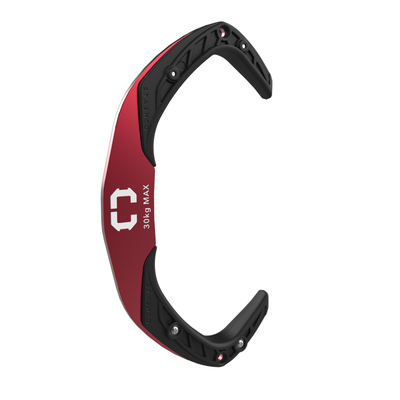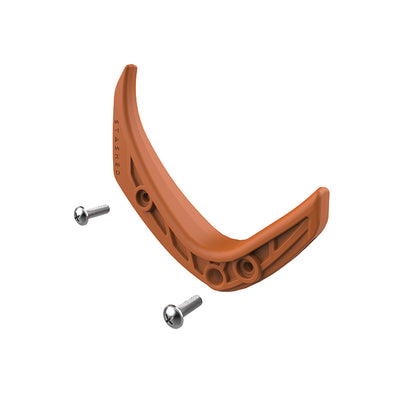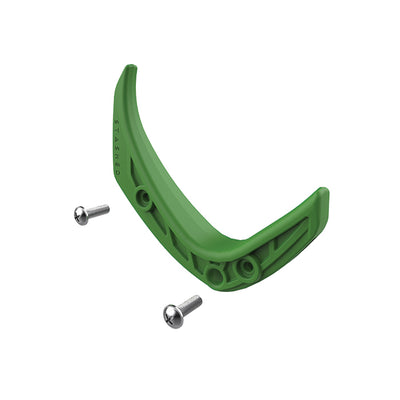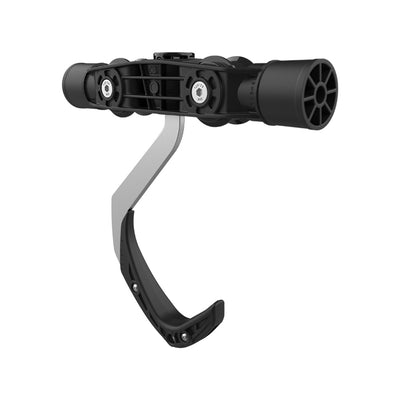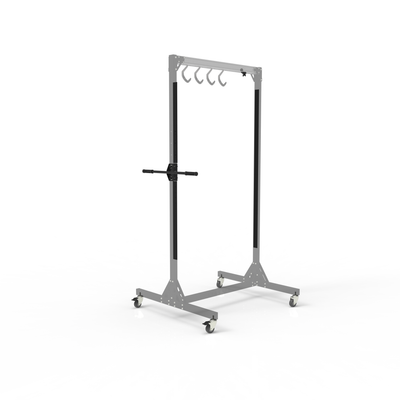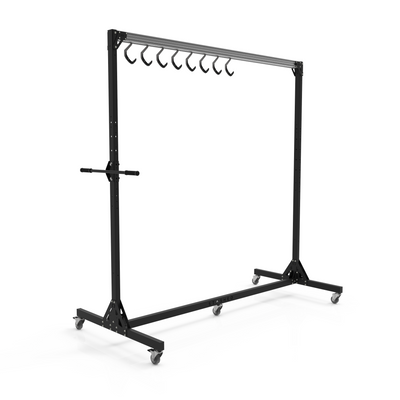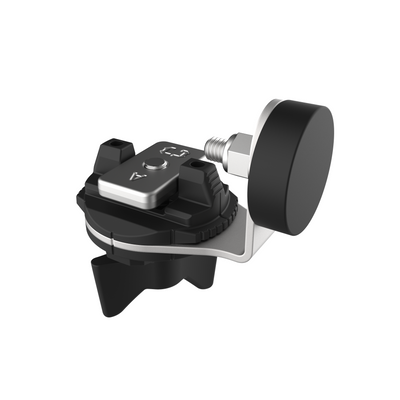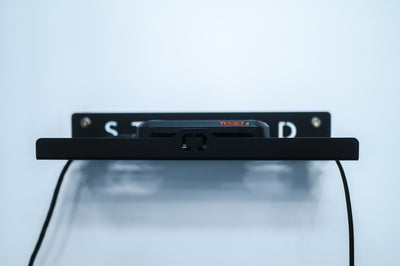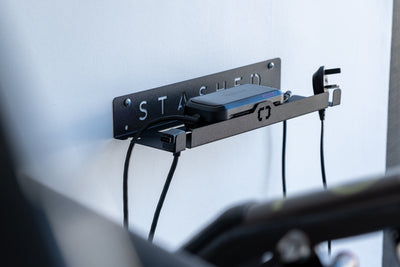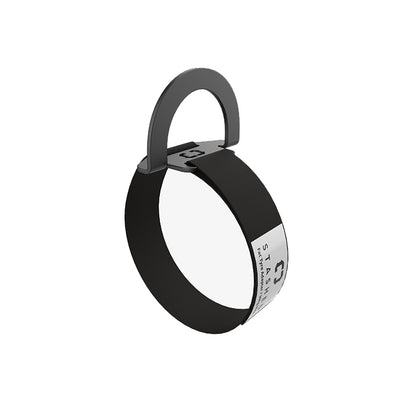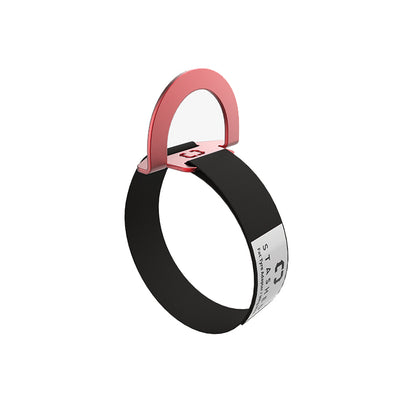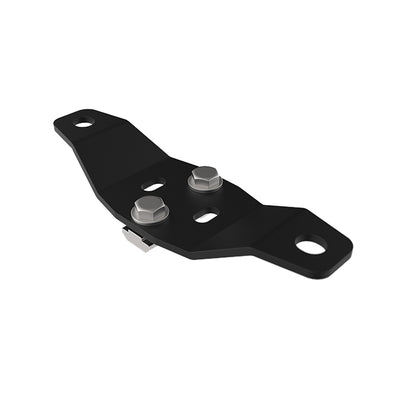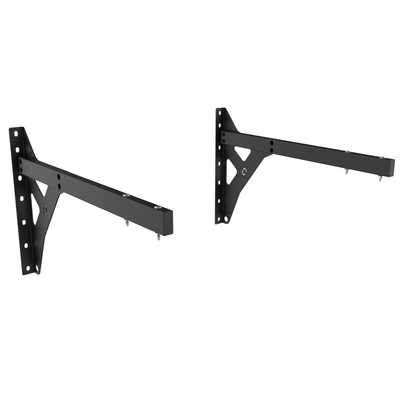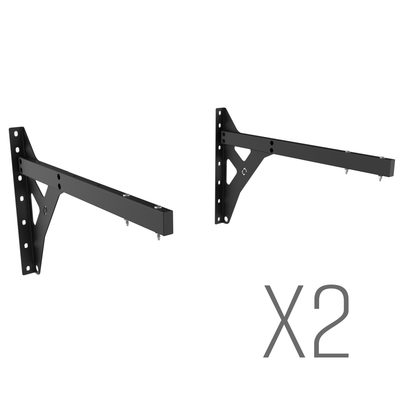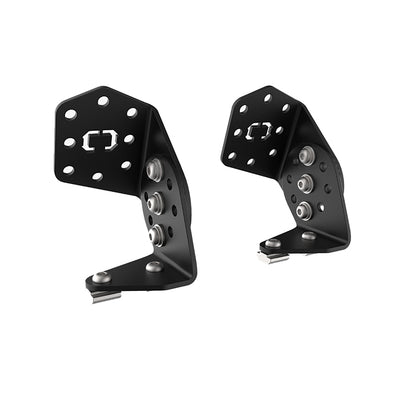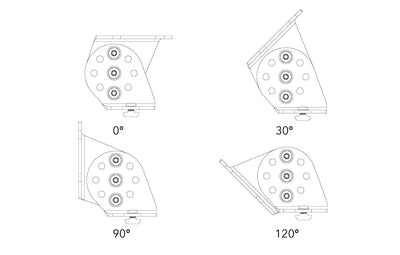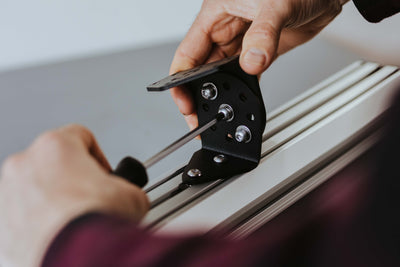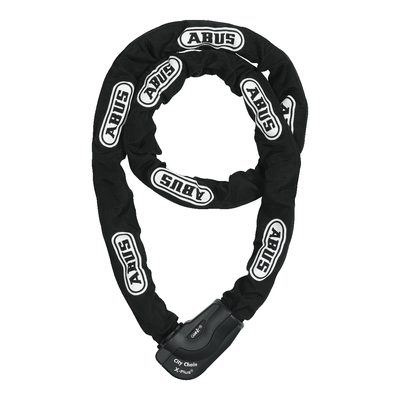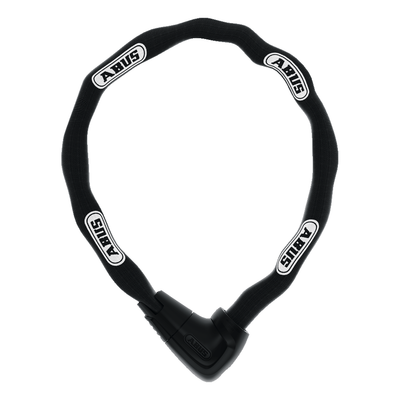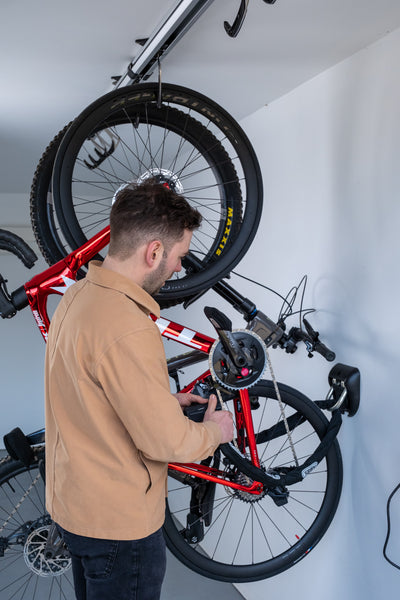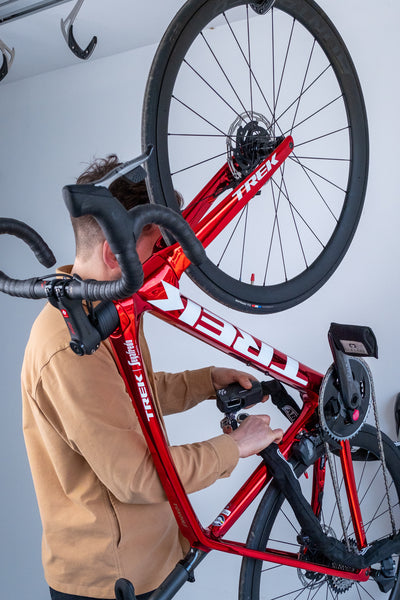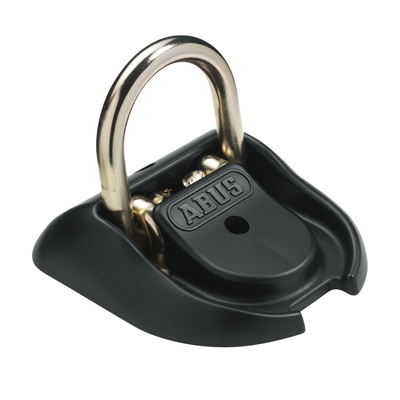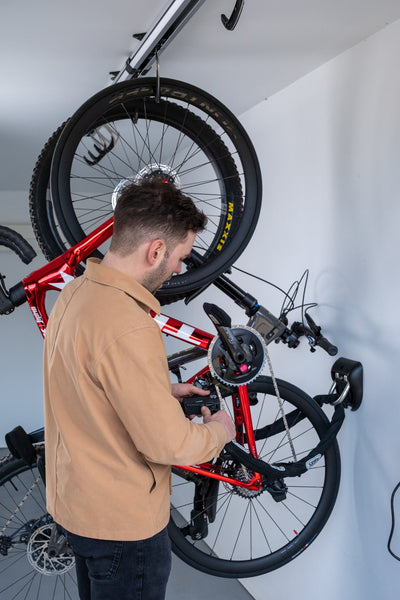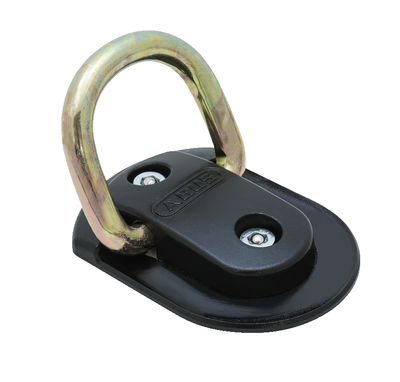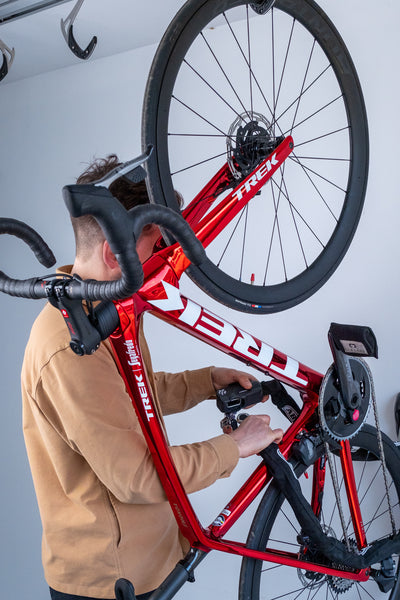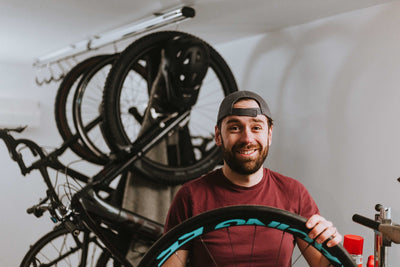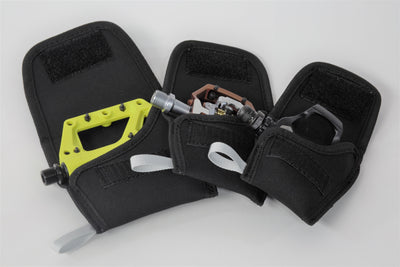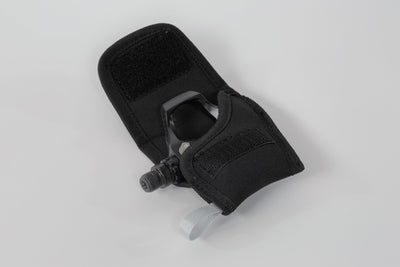The Tour de France isn’t just the biggest race in cycling. It’s the largest annual sporting event in the world. Three weeks. Twenty-one stages. Millions of spectators. And a pressure cooker of physical and mental demand that very few will ever experience firsthand.
Stashed ambassador, Chris Opie, has raced as a pro, coached top-level cyclists, and been immersed in the world of elite performance for decades. While he’s not racing the Tour himself, he understands what it takes to stay calm and perform when the stakes couldn’t be higher.

We asked him to take us behind the curtain. What’s really going on in a rider’s mind before the Tour? How do they manage the pressure? What does it take to show up day after day and stay sharp?
How Do Riders Stay Calm When Everything is on the Line?
According to Chris, it starts with one word. Practice.
"Top-level riders compete somewhere between 60 and 90 times a year," he says. "And they’ve often been doing that for a decade or more. Some started when they were children. By the time they reach the World Tour level, managing nerves becomes second nature."
That doesn’t mean the pressure isn’t real. Especially at the Tour. “It’s intense. Every rider feels it. The first week is the most nervous of all. Everyone is trying to get into the same space on the road. That’s why you see so many crashes. Everyone wants to be at the front, and there simply isn’t room.”
But within the chaos, the pros create structure. Music. Focus routines. Silent rituals. Time alone. Anything to block out the noise. “It’s about arriving at the start line in the best headspace possible. You get better at that with experience.”

Training That Builds More Than Just the Body
Preparation for the Tour de France isn’t just about miles in the legs. It’s about building resilience from the inside out.
In May and June, some riders like Wout van Aert might clock nearly 7,000 kilometres. That’s more than most people ride in a year. And much of that is done at altitude. Sleeping at 2,000 metres or more forces the body to produce more red blood cells, making it better at transporting oxygen. The goal is simple. Arrive stronger. Recover faster. Go deeper.
Chris also points to heat adaptation. “Riders train in overheated rooms or in extra clothing to simulate racing in high temperatures. When done consistently, it can be almost as effective as altitude work.”
But the numbers don’t tell the full story. It’s the mental load that separates the good from the great.
“Under-over intervals are brutal,” Chris explains. “You ride above your threshold for 30 seconds, then just below it. Again and again. If your threshold is 400 watts, you go to 450, then drop to 350, and repeat. Your legs are full of lactate, your lungs are screaming, and you still have to hold it together mentally.”
This is where the headspace work begins. The calm within the effort.

How the Team Creates Mental Space for Riders
It might seem like riders live in a bubble of comfort, but professional cycling is full-on. Thankfully, teams go to incredible lengths to keep their riders mentally and physically balanced.
“The organisation around World Tour riders is precise,” says Chris. “They have luxurious buses, proper beds, well-planned travel. They make everything feel as seamless as possible, even on the big transfer days.”
In recent years, teams have also recognised the emotional side of performance. “Families are now allowed to be close to the team. That was unheard of not long ago. Being able to have a partner or child nearby makes a huge difference. It helps the rider stay grounded. They’re not just athletes. They’re people.”
The same philosophy applies across the team. Even the mechanics, who are often up before sunrise and working late into the night, find ways to recharge. A swim in the hotel pool. A moment of quiet. A walk around the block. Little moments to reset. And it matters.
Everyone’s headspace counts.
Cycling Is a Team Sport, Even When Only One Crosses the Line First
“People often think of cycling as an individual sport,” Chris says. “But that couldn’t be further from the truth.”
Riders might race for personal glory, but their performances are built on the back of team effort. “One rider will cross the finish line first. But only because five or six others made that possible.”
Support comes in many forms. Carrying food and bottles. Pacing a rider back to the peloton after a crash. Blocking wind for hundreds of kilometres. Taking care of tactical calls so the team leader can focus on one thing—riding.
“The best example is in the sprint stages,” Chris says. “The sprinter might not feel any wind until the final 150 metres. The rest of the team has done everything to get them there fresh.”
Even in mountain stages or time trials, the same principle applies. You need a unit that moves together. One mind split across several bodies.
Without the team, the individual doesn’t stand a chance.

So What Can We Learn from the World’s Best?
It’s not just about data. It’s not just about watts. Mental clarity plays a bigger role in cycling than most people think. And it doesn’t happen by accident.
Routine. Environment. Structure. Support. These are the pillars that help elite riders find peace in the storm.
Whether you’re racing or just riding for the love of it, you’ll go further with a calm start. Your headspace matters. Your environment matters. And the way you prepare shapes the way you ride.
At Stashed, we believe that too. That’s why our systems are built to make your setup smooth, calm, and ready for the ride.
Stashed Ambassador Chris Opie
Chris Opie is a former professional cyclist with a career spanning multiple top-tier teams, including Rapha Condor and Canyon Eisberg. Known for his sharp sprinting and deep understanding of the sport, Chris has transitioned into coaching, commentary, and brand ambassador roles. He brings a wealth of experience from inside the pro peloton and remains passionate about helping others ride better, train smarter, and stay connected to the joy of cycling.


